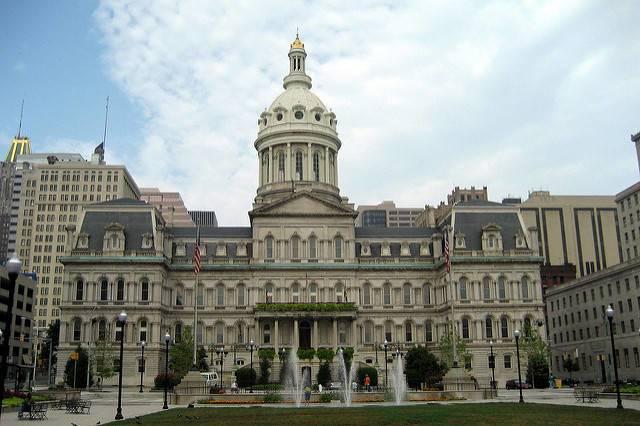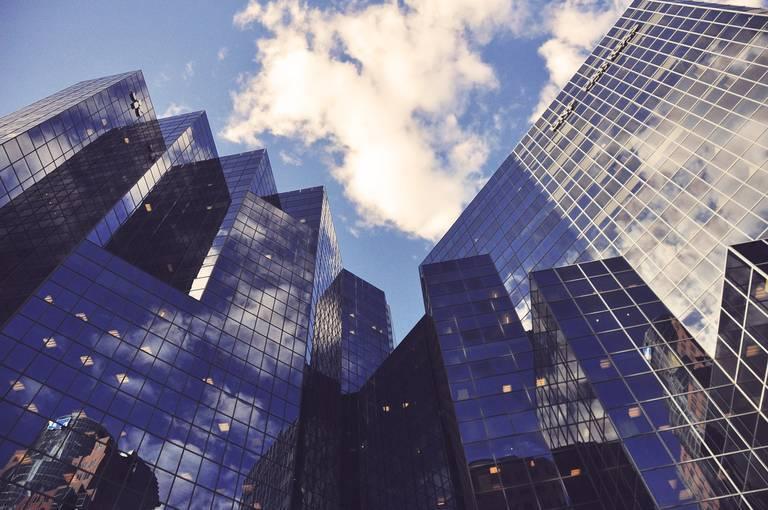Panera Bread Sells For $7.5 Billion, But It's Not Likely to Change


Has Panera Bread sold out?
That may be how some longtime fans of the 36-year-old bakery and café chain react, as Panera’s business continued to boom thanks to its healthy fare and social mission. What was once a solo shop in suburban St. Louis exploded into a chain of over 2,000 restaurants, which serve healthy soups, salad, sandwiches, pastries and gooey mac-n-cheese.
But for founder and CEO Ron Shaich, leading a company that has been public since 1991 comes with its share of headaches.
“I spend about 20 percent of my time explaining what I do and what I’m going to do,” he recently told Fortune magazine. “I think being private, for Panera, doesn’t give us anything other than it frees us up.”
On Wednesday, Shaich agreed to sell Panera Bread to Luxembourg-based food giant JAB Holding Co. for $7.2 billion. With the assumption of Panera’s debt, the acquisition’s total value soars past $7.5 billion.
JAB, which is owned by a wealthy German family, also outright owns or has a major stake in Krispy Kreme, Caribou Coffee, Keurig Green Mountain, Peet’s Coffee and Tea, Stumptown Coffee Roasters, and Einstein Bagels. Fashionistas will also note that JAB owns a bevy of luxury brands, including Bally, Jimmy Choo and Belstaff.
Longtime Panera Bread stockholders will profit handsomely as JAB plans to pay about $315 a share. Shaich often tells the media that Panera has been the best-performing American restaurant stock over the past 20 years, with share prices increasing 8,000 percent – a rate far faster than previous food company rocks stars such as Starbucks, Chipotle and Buffalo Wild Wings. Recent buyers will not fare too poorly, either: In early November, shares of Panera were selling for $186. And Shaich will benefit as well, as he reportedly owns about 5 percent of Panera’s Series A shares.
But fears that Panera will change its ways as stockholders cash out may be unfounded. The company has built itself into a juggernaut that reaps $5 billion in sales annually because of what it says is a commitment to sourcing the freshest and best possible ingredients. Over the years, Panera has gone against the U.S. food industry’s conventional wisdom, with one example being a “no-no list” of additives and preservatives the company pledged to remove from its menu items. And JAB has a reputation for maintaining a hands-off approach toward the popular consumer brands it buys.
Shaich told Panera fans as much during his interview with JAB, saying his company and the food conglomerate shared a long-view approach. "They are very committed to long term decision-making," he said of JAB. "And very committed to a hands-off approach."
So while the newest addition to the JAB family means we may see Peet’s or Caribou coffee in Panera locations, the odds are high that those tempting but noxious Krispy Kreme glazed doughnuts will not take over the chain’s menu.
Consumer tastes have changed, which explains the recent struggles for fast-food chains such as McDonald’s and beverage companies including Coca-Cola and Pepsi. The world’s largest food companies know that tinkering with a profitable business venture could sour if consumers realize their favorite upstart brands have changed ingredients or shied away from their social agenda.
Coca-Cola, for example, let Honest Tea run its own show after purchasing the beverage upstart in 2011; the same goes for Unilever’s ownership of Ben & Jerry’s, along with General Mills' management of brands such as Annie’s, Cascadian Farm and Muir Glen. The odds are high that regulars who frequent a Panera location will not notice any difference.
Image credit: Flickr/Samantha Celera
Report: Pet Foods May Not Be as Safe as Consumers Think


After evaluating over 900 pet food products from 71 companies, a Denver-based NGO concluded that far too many of them contain dangerous levels of toxins. Some of these pet foods contained 16 times the levels of lead found in the drinking water in Flint, Michigan, alleged the Clean Label Project. Other toxins found at high levels included arsenic, cadmium and residues from pesticides.
The report will trigger memories of the tainted pet food scandal a decade ago, when reports of contaminated food byproducts sourced from China blanketed the newswires. The culprit then was melamine, a chemical that found in ingredients such as wheat gluten and concentrated rice protein. Several years later, the retailer PetSmart removed several Chinese-made dog treat products from its shelves over fears that they were contaminated.
Pet food companies claim they are striving to clean up their supply chains. But some advocates say the $23 billion dollar industry is overall subjected to little regulatory oversight.
Researchers at the Clean Label Project evaluated several hundred pet food products not only for contaminants, but also for nutrition content in an attempt to verify these companies’ claims about protein, fat, fiber and other nutrients.
The organization claimed that, unlike food products for human consumption, pet foods are not held to the same rigorous testing standards. Although federal regulators say all pet foods must be safe for animals to eat, many manufacturers’ claims about nutrition and purity go unchecked, the NGO claimed in the introduction to its study.
The result is consumers paying for dog or cat food that has “human grade” ingredients or is “all natural.” But the reality, according to the nonprofit, is that a higher price is not necessarily indicative of higher quality or purity.
The top- and bottom-10 lists may surprise dog and cat lovers. While the safest foods included brands from smaller companies, foods from widely known brands such as Purina and Iams made the list. But the products Clean Label Projected tagged as under-performers were all made by companies that claimed their pet foods were made from the highest quality ingredients, including rabbit, venison, goat and berries. The same bottom-10 list also included brands that were supposedly “vegan” or formulated for puppies.
Clean Label Project listed the toxins for which it tested these products. The NGO says it contracted with a third-party laboratory to test the cat and dog food products for contaminants. A group the organization described as a “medical advisory board” then analyzed and benchmarked those results. Finally, Clean Label Project gave each product a rating with five stars for those judged to be the safest, and one star for those products with the highest levels of contaminants.
The report caps a tough month for several pet food suppliers. The Food and Drug Administration (FDA) announced recalls for several products, from pig ears to “braised beef” canned dog food. The causes included salmonella, beef thyroid hormone and even a barbiturate. As Forbes reported, meat from an animal euthanized with pentobarbital was included in one company's dog food blend, which sickened five dogs and killed one in Washington state.
Image credit: Jeffrey O. Gustafson/Wiki Commons
Sweden Shakes Up Shopping With a Mall for Reclaimed Goods


Sweden has a reputation for having one of the best recycling rates worldwide, so it should not be surprising that the Nordic country is home to the world's first mall that only sells recycled, upcycled and repaired goods. ReTuna Återbruksgalleria, which is about 75 miles west of Stockholm, opened in August 2015 in the city of Eskilstuna.
Its name may sound like the latest Ikea light fixture or nightstand, but ReTuna’s founders want this center to challenge the norms of retail. Suggesting that ReTuna is not only the first shopping center to sell recycled and reclaimed goods in Sweden, but also in the world, the goal of the complex is to “achieve more with what we already have.”
Functioning as part recycling depot, part shopping experience and part education center, ReTuna features 15 stores, a restaurant and a conference facilities. The mall includes retail shops for home decor and furniture, refurbished computers and electronics, housewares, sporting goods, and outdoor plants.
Several of these stores also function as “do-it-yourself” showrooms, where customers can learn tasks such as how to repair household items or make their own lamps. DIY-ers and sustainable living mavens can also take a break in ReTuna’s café, which offers organic and sustainable fare.
The mall is a partnership between the municipal government, nonprofits and local businesses. And its staff also maintains a busy community-oriented calendar.
ReTuna’s management is keen to expand and is now seeking more designers, a furniture upholsterer and someone who can run an ecologically-minded salon or beauty products store. The center is also open to ideas for businesses that can contribute to the local sharing economy, with one example being a tool-sharing business. Such entrepreneurs must heed ReTuna’s ethos: “Sustainability is not about to hold back and live less, but to achieve more with the resources we already have.”
According to the shopping center’s manager, the customer experience at ReTuna is more than about shopping with an ecological conscience. The idea is that visitors show up, bringing items such as furniture or clothing that are no longer needed. A “drive-thru” recycling depot run by a local social enterprise accepts those items, and then local workers sort through them and decide what can be distributed to stores within the mall.
Those same shoppers can then browse through the stores, where they may find something for the living room, or a new jacket, and perhaps score some flowers for the garden as well. In addition, visitors can enroll in a one-year Design-Recycle-Reuse program. ReTuna also offers study visits during which attendees can learn about the inner workings of the mall. These visits cost about $136 and are held once a week.
ReTuna endured its share of growing pains, and its general manager acknowledged in one interview that some stores are struggling to make a profit. Of course, one challenge the shopping center faces is that no one else has attempted such a business model, which makes for a huge learning curve.
But Eskilstuna's 67,000 residents seem more and more open to the idea of buying repurposed and refurbished goods, which is inspiring ReTuna to set an even bigger goal: to position this town as a global destination that will showcase what sustainable living and the circular economy are all about.
Image credits: ReTuna
Residential Solar: Competition Can Create Confusion


There is now enough installed solar energy capacity in the United States to power 8.3 million homes, according to the Solar Energy Industries Association. In fact, 1 million homes already have solar systems, and the utility-scale sector is facing record-breaking growth. Although the solar industry has experienced an impressive boom, some factors still hinder greater solar energy deployment.
TriplePundit spoke with Vikram Aggarwal, founder and CEO of EnergySage, the so-called “Expedia of solar,” about the hurdles for greater residential solar energy deployment. Although competition is usually viewed as a force that can help promote growth in an industry, Aggarwal had some interesting insights that contradict this notion.
EnergySage recently released the results of its 2016 Solar Installer Survey with input from over 360 U.S. solar installers. According to the survey, 53 percent of installers said their largest obstacle to closing sales is the confusion created by their competitors and the associated impact on overall consumer confidence.
Solar companies say prospective solar customers are getting more competing bids for a solar system than last year, and 32 percent of installers report that it's harder to acquire customers.
Rather than increasing consumer confidence, competition among solar installers might be undermining sales. Aggarwal described what he considers a relatively common scenario in residential solar.
"A solar installer asks what other quotes the potential customer is getting. The installer then might badmouth the other installer or the equipment they are using. The installer thinks they are helping their cause, but it creates confusion for the consumer. If there isn’t a third party like EnergySage, then who will break the tie?"
EnergySage helps increase the confidence for solar shoppers by letting users rate solar installers on several different criteria. This provides solar shoppers with an unbiased source of information, independent of the solar installers and equipment manufacturers. Historically, consumers have relied on solar salespeople as a source of information when making a purchasing decision, although this information is likely to be biased or even incorrect.
"Solar has grown quite fast. A lot of companies have hired a lot of salespeople, and they are not all well trained in solar," Aggarwal explained. "It takes about three, four or five months for someone to really understand solar. Unfortunately, many of these salespeople don’t know solar that well, and consumers can tell."
Rapid hiring rates are a symptom of solar being a young industry that is experiencing rapid growth. Solar employment increased by 51,000 jobs in 2016, representing a 25 percent increase over 2015.
"The solar industry is still new after 20 years of significant growth," Aggarwal said. "From the consumer perspective, when you or I go in to buy a car or air conditioner, we trust the product. With solar, if the installer says the other installer is wrong because they want to sell their product, then it is very damaging to the consumer’s confidence."
Interestingly, consumers aren't necessarily buying the lowest-priced solar system, Aggarwal told us. "Consumers want to know: Is it a Honda, or is it a Mercedes? People are willing to pay Mercedes prices for a Mercedes but not for a Honda. Most people don’t go with the cheapest solar bid. Consumers are picking better-quality equipment."
Image Credit: Kaloyan Lozanov
Governments: Glaciers and Rivers are Legal Persons and Have Rights


Does a river have rights in court? Is it entitled to fair representation if it can’t speak on its own behalf? Do receding glaciers have a voice when they're harmed?
According to the governments of India and New Zealand, they do. Last month, in three unusual rulings, the federal government of New Zealand and the high court of the state of Uttarakhand, India, ruled in favor of recognizing specific rivers as legal persons. Glaciers, impacted by global warming and vital to India’s own sustainability, the courts rule, have the same protections.
The three rulings took place within days of each other, with the New Zealand government announcing on March 15 that it would recognize a petition by the Māori tribe of Whanganui to have a river of the same name recognized as their kin. The step will allow the river to have legal representation in court, much like a minor would have in cases of legal debate.
To the tribe, however, the new status was more than a legal recognition of their right to protect the river against abuse. It was also a matter of recognizing the river's true relationship to the Maori tribe’s existence.
“The reason we have taken this approach is because we consider the river an ancestor and always have,” Gerrard Albert, the tribe’s lead negotiator, explained. "[From] our perspective treating the river as a living entity is the correct way to approach it.”
As far as New Zealand’s courts are concerned, the new status means the river will now be entitled to representation and will have a voice much like a minor has when represented by a parent or guardian.
The ruling also has profound implications in cases of abuse or pollution, said Chris Finlayson, the minister who oversees Whanganui Tribe negotiations. “[The river] Te Awa Tupua will have its own legal identity with all the corresponding rights, duties and liabilities of a legal person.”
When it comes to India’s two historic rivers, the Ganga (Ganges in English) and its sister, the Yamuna and Himalayan glaciers that sustain the country’s water source, the courts’ decisions were triggered by the recognition that the two rivers and two glaciers are now in a perilous state of ecological decline from human activity. And humans are not only threatening the viability of its “sacred rivers," but potentially the future of India as a nation.
In the first instance, the high court decided that while the two rivers have an indispensable role in the daily workings of city and industry, they also have cultural and spiritual significance and deserve legal recognition.
“The rivers have provided both physical and spiritual sustenance to all of us from time immemorial," the court wrote in its ruling. "Rivers Ganga and Yamuna have spiritual and physical sustenance. They support and assist both the life and natural resources and health and well-being of the entire community. Rivers Ganga and Yamuna are breathing, living and sustaining the communities from mountains to sea.”
According to the World Health Organization, 47 percent of India’s irrigated lands rely on the Ganga and a full third of the second most-populous nation on earth reside in the Ganga Basin. The river intersects 50 different cities along its route. In many of those communities, it provides both a water source and a discharge point for domestic and industrial refuse.
Yet the role of these sacred bodies of water is a complex one when it comes to Indian society. More than 790 million gallons of sewage is dumped into the Ganga each day, most of it from household sources. Only a fraction of that sewage is treated before it reaches the river, say researchers aligned with the National Ganga River Basin Project, a World Bank initiative that is assisting India with its effort to revitalize the river. Lack of adequate infrastructure and increasing population is now threatening wildlife, like the Ganga dolphin, whose numbers are declining as a result of the pollution.
The 850-mile-long Yamuna, which is fed by glaciers in the lower Himalayas and supplies irrigation and domestic water throughout its route, threads its way through the country’s capital, Delhi, and is equally important to India’s future.
“Yamuna River passing through 22 km in Delhi was once described as the lifeline of the city,” civil engineering professor Anil Kumar Misra wrote in a 2010 academic report, A River About to Die: Yamuna. “But today it has become one of the dirtiest rivers in the country.” After decades of industrial pollution, the river is becoming unsustainable, “completely ruling out the possibility for underwater life,” Misra wrote.
A little less than a week after the Ganga and Yamuna decision, the same high court accorded personhood to two Himalayan glaciers that feed into the sacred rivers and have been recorded to be receding at an “alarming rate.”
“The rights of these entities shall be equivalent to the rights of human beings and any injury or harm caused to these bodies shall be treated as injury or harm caused to human beings,” the high court ruled.
The new status doesn’t just protect the rivers and the glaciers, however. It accords “living entity” status to tributaries and those natural features that are nourished by the waters and glaciers, such as India’s meadows, forests and lakes.
These legal moves are part of a growing trend to recognize the “rights” of corporate and environmental entities. The Citizens United v. FEC and Burwell v. Hobby Lobby cases, which gave companies rights to support political causes or make decisions based on religious opinions, were the most recent in America to explore the legal personhood of an entity.
In India, however, recognizing personhood goes back even further, says Economic Times writer Vikram Doctor. An historic case involving whether the caretakers of a Hindu temple had the right to decide the use of the temple’s funds put the ownership squarely in the “hands” of the deity and her temple, recognizing that entities often hold much broader roles and rights in society than the courts are prepared to address.
The question now is whether recognizing India’s glaciers and key rivers as legal persons will actually ensure their sustainability. Some are calling the new rulings a “knee-jerk reaction” that lacks a viable legal roadmap. Be that as it may, establishing nature as a legal living entity, with rights of representation, may be the first real step to addressing culpability and the results of global warming.
Images via Flickr: Jon Rawlinson; Felix Engelhardt; shimriz
The importance of UN Sustainable Goals in corporate strategies and reporting


Are Student Loans the Next Financial Bubble?


Over the past 15 years, Congress enacted a bevy of laws in an attempt to reform financial and disclosure legislation. From Sarbanes-Oxley to Dodd-Frank, the goals of such legislation include increased transparency, a boost in consumer protection and, of course, shirking the onset of another financial crisis.
But the outcome is far from perfect – as evidenced by Wells Fargo's ongoing scandals and the rise of unregulated shadow banking. With a new presidential administration keen to eliminate reforms that seek to rein in the excesses of the financial industry, watch for new economic risks to emerge in the next few years.
One of those risks is America’s mounting student debt, which is well over $1.4 trillion. According to MarketWatch, this figure rises at a rate of $2,726 a second.
In the wake of the global financial crisis of 2008, some commentators suggested forgiving some student debt as an attempt to relieve young workers and revitalize the middle class. But do not expect anything approaching that idea over the next four years. And now one student loan company, which has been sued in the past for its dubious business practices, has found itself in court again.
As Bloomberg reported, in response to a lawsuit from federal regulators, Navient Corp. made it clear that its overarching goal is getting borrowers to “cough up cash” for creditors like its biggest client, the U.S. Department of Education.
That is quite a turnaround for Navient and its CEO, Jack Remondi, who wrote last month that the company's goal was to help its 12 million customers, who make up over a quarter of the total number of Americans who are currently paying off their student loans.
It also seems to differ from Navient's agreement with the Education Department, which contracted with the company -- once a division of student lender Sallie Mae -- to help borrowers pay off their loans and settle their debts in a way that is feasible for individual debtors.
But in a lawsuit filed in January, the Consumer Financial Protection Bureau (CFPB) said the company has been “systematically and illegally failing borrowers at every stage of repayment.” The CFPB noted that since 2009, most student borrowers secured the right to repay their loans based on their current income so they could become more affordable.
But instead, the agency accused Navient of several violations, from providing bad information to the improper processing of payments. In a few words, the CFPB accused Navient of deception, exacerbating financial distress and obscuring the necessary information needed to help borrowers manage their payments.
The most alarming result, as explained by Bloomberg’s Shahien Nasiripour, is that rather than launching the necessary paperwork to refinance student loans so borrowers could make payments based on their income, Navient pushed them toward a path that was quicker for employees to set up. In many cases, debtors were steered toward forbearance plans, which often delayed their repayment. Such terms are more profitable for Navient, but the CFPB alleges that the result was another $4 billion in interest charges for borrowers.
As Remondi wrote of Navient on Medium last year, “Help is a phone call away.” That may have been true, but apparently that help was more beneficial for Navient’s ledger, even as the company claimed it was providing the best possible information to its customers.
Whether this lawsuit proceeds is an open question, as the CFPB is one agency that is a target of President Donald Trump’s for elimination. At the very least, the CFPB will see a huge decrease in funding – even though it has been responsible for almost $12 billion to 29 million consumers since its inception.
But many analysts suggest that crippling student loan debt could end up in a financial crisis on Trump’s watch.
In another example of things going south: At least 550,00 students signed on with a federal program that promised to pay off their education loans if they worked 10 years in a public service job, such as a public hospital or nonprofit. But as the New York Times and other publications reported last week, the Department of Education told some borrowers who are approaching the end of their 10-year commitment that they don't qualify for the program after all.
Critics accused the company servicing those loans, FedLoan Servicing, of failing to provide adequate transparency and clarity over what kind of jobs are covered by the debt forgiveness program. Many of those former students, who took lower-paying jobs in order to be relieved of saddling debt, could end up defaulting on their loans.
So, could student debt trigger another financial crisis? The raw numbers alone are worrisome. One commentator on Forbes estimated that the amount of student debt generated in the U.S. runs over $4,000 for every American citizen – and only 37 percent of student borrowers are on track to pay off their loans without any kind of assistance. Last year, Consumer Reports suggested this mounting debt is similar to the housing bubble that burst a decade ago.
Meanwhile, student loan debt continues to comprise a larger portion of the national debt, from 5.7 percent in 2007 to over 7 percent today.
The spike in student in debt is in part the result of a culture that insists young people score a college education if they are to “amount to anything” – even though plenty of trades and vocations pay much better after a two-year training program than what the holder of a four-year bachelor’s degree in American Studies or French Literature can earn upon graduating.
The average hourly wage for four-year degree holders has barely budged since 2000, but the quest for that degree has resulted in higher-education tuition costs increasing far more rapidly than the inflation rate – largely because universities are investing in administrators, along with campus bells and whistles, instead of faculty and classrooms. For-profit universities, which by some accounts wrack up a third of all higher-education debt, are also at fault for promising an easy path to high-paying jobs that often do not exist.
Some students are saying enough is enough, and want to reduce the costs of their education before they spiral into debt. The local university near my home, Fresno State, is laden with dilapidated classrooms desperate for repairs – but university administrators wanted a new $80 million student union instead. Students voted down that proposal by an almost 60 percent margin because they objected to an additional $400 in student fees to pay for the building.
More students across the country are also choosing to reject rising student tuition, not by on-campus activism, but by refusing to pay their loans. If this trend continues, Trump will have a huge headache to manage – and he alone cannot fix it.
Image credit: TargetMarket/Wiki Commons
EU Says No to Palm Oil for Biofuel: Corn and Soy Could Be Next


On Tuesday, members of the European Parliament voted by a huge margin to approve a resolution calling for the EU to phase out the use of vegetable oils, including palm oil, in biofuel by 2020. While 97 percent of the Parliament voted for the measure, the plan will not take affect until it is approved by the European Commission.
Nevertheless, the vote sends a signal that what was once a European biofuels boom has started to fade as more policymakers are aware of the social and ecological costs. Although environmentalists agree that plant-based fuels burn cleaner at the pipe, the concerns over biofuels’ ties to environmental destruction, human rights violations and impact on food prices have dampened the enthusiasm over what was once seen as a viable alternative to fossil fuels.
A decade ago, the EU viewed biofuels as key to the region’s goal to source 10 percent of its transport fuel from petroleum alternatives. But critics say the heavy price has been the loss of as many as 1 million hectares of tropical soils, with deforestation rampant across countries such as Indonesia and Malaysia. One study suggested that when accounting for the loss of carbon sinks such as peatlands, paired with the destruction of forests, biodiesel from vegetable-based oils on average produced 80 percent more emissions than fossil fuels.
So, could a similar movement happen here in the U.S., where the Renewable Fuel Standard (RFS) program has resulted in a surge of biofuels sourced from corn and soy? RFS, which has its origins in the 2005 Energy Policy Act, expanded under the Energy Independence and Security Act of 2007 as a tactic to reduce American dependence on foreign sources of energy. But that program helped to ignite a food-versus-fuel debate as opponents say land could be used to grow food instead of crops – and advances in electric vehicle technology could eventually eliminate the growing need for corn ethanol or soy diesel.
Oddly enough, opponents of the RFS could find allies in the Donald Trump White House, despite the administration’s determination to ramp up domestic fossil fuel production.
“The RFS was sold to many of us as necessary for energy independence,” said Rose Garr, a campaign director with the NGO Mighty Earth. “The rationale was that biofuels would be cleaner and reduce the need for foreign oil. But no one really thought about how much land is needed to source this fuel, or how many crops are displaced in order to fill our tank.”
One outcome is the perverse reality that the U.S. is now importing more biodiesel from abroad. The U.S. Energy Information Agency (EIA) says that such imports rose by 916 million gallons, a 65 percent increase from the previous year. Almost two-thirds of biodiesel imports come from Argentina, which doubled its exports of soy-based biodiesel between 2015 and 2016. NGOs such as Mighty and WWF are concerned that America's thirst for biodiesel, as well as its demand for cattle feed, have resulted in deforestation across much of Argentina’s chaco and Yungas forests as trees are felled in order to cultivate soybeans.
Interestingly enough, the growing movement to put the brakes on the production and import of biofuels has formed in what Garr described as “the strange bedfellows coalition.”
This motley crew is comprised of organizations and businesses that are all over the map: environmental organizations such as the National Wildlife Federation and Sierra Club; anti-hunger advocacy groups led by Oxfam; meat producers including the National Chicken Council and the National Turkey Federation; and oil companies represented by the powerful American Petroleum Institute.
Some of these groups object to the growing use of land for cultivating fuel crops instead of food. Others say the rising cost of animal feed is hurting their businesses while driving food prices up – even while the prices of commodities have largely fallen over the past few years. Oil companies, of course, see a threat to their market, but also point out that far too much conservation land has become dedicated to monocultures of soy and corn.
While these disparate groups all have varying objectives, if they can truly find common ground, they could find a willing ear in the White House. While many environmentalists fear that Donald Trump’s drive to throw the baby out with the bathwater could result in even greater harm to the world's climate, Garr is hopeful that a change in the RFS could pose some positive environmental and social benefits. “[Trump] has surrounded himself with advisors close to oil and gas interests that are opposed to the renewable fuel standard, so that could possibly help our cause,” she explained.
The oil industry is correct when it points out that the increase in soy and corn plantings over the past decade in part created the “dead zone” in the Gulf of Mexico, harming marine life and decimating local fishing industries. The trick is finding alignment with Mighty and other environmental groups. “Ultimately, we want to see vehicles electrified, that in turn are connected to a grid powered by renewable energy,” Garr said as she wrapped up her telephone interview with 3p.
Ultimately, American policymakers have little in common with their friends across the Atlantic, but the reality on both continents is clear. “If we are putting corn and soy into our tank, it is increasingly clear that this fuel will have to come from somewhere else other than a local farm,” Garr concluded.
Image credit: Wolfgang Lonien/Flickr
Will the Department of Justice Roll Back Police Reform?


No one disputes that being a police officer is difficult and that those in blue put themselves at risk of harm every day. But, as demonstrated by a slew of publicized use-of-force incidents, police departments across the country are struggling to reign in bad actors and improve relations with the communities they serve. As any African-American will tell you, such issues are far from new – the only difference is that cell phone cameras and social media afford the general public greater visibility of the problem.
To that end, during the Barack Obama administration, the Department of Justice launched oversight programs with many struggling police departments. Generally known as consent decrees, the goal of these efforts are to reform police departments in order to rebuild trust with local communities and make law enforcement more efficient and accountable.
But in a memorandum issued last week and publicly released on Monday, Attorney General Jeff Sessions ordered a review of all of the DOJ’s activities, including investigations, prosecutions, grants, trainings and compliance reviews. “The misdeeds of individual bad actors should not impugn or undermine the legitimate and honorable work that law enforcement officers and agencies perform in keeping American communities safe,” Sessions wrote in his order.
Critics say this directive could undo some of the positive changes that are happening within police departments in large and small cities alike. The shift in policy away from “pattern-or-practice” cases risks rekindling the mistrust between local communities and police departments. And the policy reversal could also affect local businesses in neighborhoods across the country that have suffered due to violence.
One example is the Mondawmin and Woodbrook neighborhoods of Baltimore, where tempers flared after local residents said police officers’ behavior exacerbated tensions in the days after Freddie Gray’s death in April 2015.
Sessions’ latest move will upset civil rights activists, but as Washington Post reporter Sarah Posner pointed out, this change “is likely to thrill elements of Donald Trump’s white nationalist base.” Critics of the DOJ’s investigations of police departments are quick to claim such tactics are a prime example of federal overreach. Posner, however, responds that since the program first started in the mid-1990s, the Justice Department has launched legal action against only a tiny sliver of the 18,000 police departments across the United States.
Baltimore could be one city adversely affected by Sessions’ directive. Not only is the city’s political and law enforcement leadership willing to follow through on the reform of its police department, but Baltimore has already committed millions of dollars over the next few years to follow through on these changes.
The city’s police commissioner said Baltimore will launch the process with or without the federal government’s guidance. While the city’s police department was the target of much scrutiny in the days after Gray’s death, other incidents -- including a “1930s gangster-style” spate of police violence -- convinced many local stakeholders that more action was needed to reform the department.
The potential rollback of these consent decrees could also affect cities such as Chicago, Cleveland, Seattle and Ferguson, Missouri. The Donald Trump administration says this reversal is about public safety, but opponents counter that such announcements are more about appealing to the president’s base.
“We know that reform is not important to the president or the attorney general,” Baltimore City Councilman Brandon Scott said in an interview with the Baltimore Sun. Let's hope the DOJ heeds the call of lawmakers like Scott and rethinks its position on rolling back collaboration with city governments.
Image credit: Wally Gobetz/Flickr
Cities of the Future Will Depend on Resiliency to Meet Urbanization Demands


By Scott Tew
Urbanization and the notion of smart cities have been emerging topics for some time now. This is no surprise, given that urban residents accounted for 54 percent of the total global population in 2015, and are expected to grow to 60 percent by 2030, according to the World Health Organization.
In order to accommodate this urban population growth, cities will continue to face increasing challenges, including congested transportation and housing and the need to reliably supply sufficient energy to meet growing demands.
Smart cities are large urban areas that are unique due to their exceptional connectivity and technology surrounding critical infrastructure and systems. These technology advancements, such as advanced sensors to monitor traffic and smart grids and lighting, will certainly help cities of the future meet urbanization challenges. But resiliency must also be a priority for creating sustainable growth, and energy efficiency plays a key role in the resiliency equation.
With this in mind, here’s why we need to pay more attention to energy efficiency and resiliency when discussing how cities will meet ongoing urbanization and climate-related challenges.
Resiliency means improved response
Resiliency is considered a system’s (or city's, for the sake of our conversation) capacity to survive, adapt and grow in the face of unforeseen physical, social and economic challenges. As urban populations grow, it becomes increasingly important that cities of the future are equipped to deal with stresses, such as food and water shortages, energy demands, inefficient public transportation systems, cyber-attacks and natural disasters. According to the Rockefeller Foundation, resilient cities are not only able to better respond during extreme events, but they are also able to better-deliver basic functions to their populations in both good and bad times.
Just as resiliency reduces a city’s vulnerability in times of extreme risk, a resilient city will also find itself better equipped to handle increasing demands resulting from growing urban populations.
Moreover, taking a city’s ability to deal with the stresses associated with population growth – demands on food, water, space and energy – into account for sustainable growth is also important when preparing for a long-term surge in urbanization. For example, incorporating energy efficiency strategies into planning efforts can minimize stress on the grid and improve overall grid reliability.
Uniting local and global efforts
To meet the demands of urban population growth, governments, businesses and non-government organizations (NGOs) will need to work together. But what exactly does this mean, and what exists to help get them there? For starters, the United Nations’ Sustainable Development Goals (SDGs), a set of 17 global goals aimed at addressing poverty and other sustainable development issues, calls for this type of collaboration. For example, goal seven calls to “ensure access to affordable, reliable, sustainable and modern energy for all." Partnerships between industry members and all stakeholders will be critical in achieving this goal.
Using the SDGs to unite conversations between government and businesses is a great start to help advance energy efficient and resilient urban environments. At the same time, these conversations are largely uncharted territories. Keeping the SDG objectives in mind during these conversations can undoubtedly serve as a missing link between strategic planning for cities of the future and preparing for increased urbanization.
However, it is also important to remember that these conversations are fluid and ever-evolving – especially as innovation progresses, providing new and exciting strategies. Ten years ago, automation technologies to help control energy usage were not commonplace, yet today they are widely leveraged.
Energy efficiency takes center stage
Energy efficiency plays an inherent and vitally important role in a city’s resiliency. As it relates to energy, resilience is also considered a “community’s reduction of and preparation for risk,” according to the American Council for an Energy-Efficient Economy (ACEEE).
Not only do energy efficient solutions support resiliency as it relates to severe weather events, but these solutions can also offer ways to better manage uncertain or changing energy supply and demand. For example, certain solutions can allow energy to be stored and automatically utilized during off peak hours. This ultimately allows for better energy management and efficiencies that avoid excess usage.
As urbanization continues to increase, cities need to be able to respond to growing energy demands. As such, embracing these types of energy reduction and efficiency strategies will help improve grid reliability, and hopefully even reduce costs down in a times of extreme stress.
Cities of the future
Smart city technology and global initiatives, like the U.N. SDGs, are helping unite cities to meet the challenges of urbanization. Implementing resiliency strategies, including energy efficiency, can also help cities achieve sustainable growth while preparing for surges in urbanization, and requires partnerships across governments, businesses and NGOs.
By achieving resiliency and sustainable growth, cities of the future will be fit to handle both anticipated and unexpected environmental, social and economic stresses.
Image credit: Pexels
Scott Tew is the founder and leader of the Center for Energy Efficiency & Sustainability at Ingersoll Rand (CEES), which supports all of the company’s strategic brands – Club Car, Ingersoll Rand, Trane and Thermo King – and is responsible for forward-looking sustainability initiatives. Since the CEES was formed in 2010, Ingersoll Rand has successfully met or exceeded its long-term goals in energy use and waste reduction, while embedding sustainability in all parts of the product development process. Tew's efforts have led to the development of world-class initiatives, including the creation of a green product portfolio, personalized employee engagement programs, and unique research on unmet needs in the green space. Tew manages all sustainability-related public transparency, advocacy, reporting and goal setting initiatives for the company.